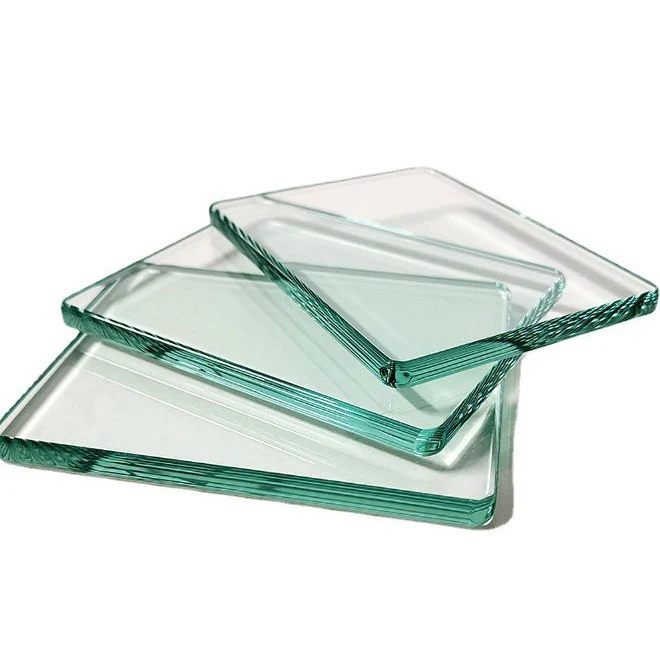Exploring Clear Float Glass: A Versatile Material for Modern Architecture and Design
2025-01-04
Clear float glass is one of the most common and widely used types of glass in the world. From residential windows to skyscrapers and automotive applications, this material plays a crucial role in the modern world, offering transparency, strength, and versatility. Whether you're renovating your home, designing a new office building, or crafting a decorative piece, understanding clear float glass and its applications can help you make informed decisions about its use.
In this blog, we’ll dive into what clear float glass is, how it’s made, its many benefits, and why it’s an essential material in both architectural and everyday applications.
What is Clear Float Glass?
Clear float glass is a type of flat glass that is produced by a method called the "float glass process." It’s characterized by its high level of clarity and transparency, which makes it ideal for use in applications where a clear, unobstructed view is needed. The process involves floating molten glass on a bed of molten metal (typically tin), allowing it to spread out evenly and form a smooth, flat surface. Once cooled, the glass is cut into large sheets, which are then used for a variety of applications.
Unlike glass that is rolled or drawn, clear float glass has a perfectly flat surface and uniform thickness. Its consistent quality makes it a popular choice for use in windows, mirrors, and other installations where high optical clarity is important.
The Float Glass Manufacturing Process
The production of clear float glass is a fascinating process that ensures the high-quality finish we often take for granted. Here's a brief look at the steps involved:
1. Melting the Raw Materials: The production starts with melting raw materials like silica sand, soda ash, and limestone at very high temperatures, usually over 1,600°C (2,912°F). The ingredients are mixed with other substances to form a homogeneous molten glass.
2. Floating: The molten glass is then poured onto a bath of molten tin, which has a higher density than the glass. This "floating" process allows the glass to spread out evenly on the tin surface, creating a perfectly flat sheet with smooth surfaces.
3. Annealing: After the glass is formed, it enters an annealing lehr—a controlled cooling chamber that ensures the glass cools slowly and evenly, which reduces internal stresses and gives it its characteristic clarity.
4. Cutting and Polishing: Once cooled, the glass is cut into various sizes and shapes, depending on its intended use. The edges may be polished, and the glass can be further processed for specific applications, such as tempering, lamination, or coating.
5. Inspection: The final product undergoes a thorough inspection to ensure it meets quality standards, including checks for clarity, flatness, and thickness.
Benefits of Clear Float Glass
Clear float glass offers numerous advantages, making it a preferred choice for a wide range of applications. Here are some key benefits:
1. Exceptional Clarity and Transparency
One of the standout features of clear float glass is its remarkable optical clarity. The float process ensures that the glass is free from bubbles, distortions, and impurities, making it ideal for applications where visibility is crucial, such as windows, display cases, and picture frames.
2. Durability and Strength
While clear float glass is known for its clarity, it also offers good strength and durability. The float process results in a glass that is uniform in thickness, which makes it stronger and less likely to break or crack compared to glass made through other processes. Additionally, it can be further treated or laminated to increase its strength, making it suitable for more demanding applications.
3. Versatility
Clear float glass can be used in a variety of settings and applications. From basic architectural uses like windows and storefronts to specialized products like mirrors, glass tables, and even custom-made decorative pieces, its versatility is unmatched. The material can also be cut and processed into different shapes and sizes to meet specific design needs.
4. Energy Efficiency
In modern architecture, clear float glass is often used as part of energy-efficient windows. When combined with coatings or double glazing, clear float glass can help reduce heat transfer, improve insulation, and minimize energy loss. This contributes to more sustainable buildings and can help reduce heating and cooling costs.
5. Low Maintenance
Clear float glass is relatively easy to maintain. Its smooth surface makes it resistant to dust accumulation and easy to clean with standard glass cleaning products. It doesn’t stain or discolor over time, making it a durable material for both interior and exterior applications.
6. Aesthetic Appeal
With its clean, sleek appearance, clear float glass enhances the aesthetic appeal of any space. It allows for maximum natural light, creating open and airy environments. Its transparency can also be used to highlight views, creating seamless transitions between indoor and outdoor spaces.
Common Uses of Clear Float Glass
The versatility of clear float glass means it can be found in a wide variety of applications across multiple industries. Some of the most common uses include:
1. Windows and Doors
Clear float glass is the go-to material for most residential and commercial windows. Its transparency allows natural light to fill rooms, while it also offers excellent sound insulation and security. It is used in single, double, and triple-glazed window units to provide thermal and acoustic insulation.
2. Architectural and Building Design
In modern architecture, clear float glass is used in everything from large glass facades to skylights and curtain walls. It contributes to a building's aesthetic while providing functional benefits such as natural lighting and energy efficiency.
3. Mirrors
Clear float glass is widely used for mirrors due to its flatness and clarity. Whether in homes, vehicles, or commercial spaces, mirrors are essential components, and clear float glass provides the necessary quality for optimal reflection.
4. Furniture and Interior Design
Clear float glass is also used for interior design elements like glass tables, shelves, and partitions. Its sleek look adds a touch of sophistication to living rooms, offices, and kitchens. Glass doors and windows in cabinetry are also commonly made from clear float glass.
5. Automotive Glass
Clear float glass is used in the production of automotive windshields and windows due to its high optical clarity and durability. Safety glass, which is often laminated or tempered, is made from clear float glass to ensure it can withstand the stresses and impact of driving.
6. Display Cases
Retailers and museums often use clear float glass for display cases because of its clarity and resistance to distortion. It allows for unobstructed views of items on display, whether it's jewelry, artwork, or collectibles.
7. Solar Panels
Clear float glass is a key component in solar panels. It protects the photovoltaic cells while allowing sunlight to pass through and be absorbed, enabling the production of solar energy.
Why Clear Float Glass Is Essential for Sustainable Architecture
In the modern world, sustainability is a priority in building design. Clear float glass plays a significant role in sustainable architecture, helping to reduce the environmental impact of buildings while enhancing their energy efficiency. When combined with advanced glazing technologies, such as low-emissivity coatings or thermal insulating films, clear float glass helps regulate a building's internal temperature, reducing the need for artificial heating and cooling systems.
By incorporating clear float glass into the design of windows, facades, and skylights, architects can create energy-efficient, sustainable buildings that allow for natural light without sacrificing comfort or performance.
Conclusion
Clear float glass is an incredibly versatile and valuable material that continues to shape modern architecture and design. From its flawless clarity and strength to its wide range of applications, this material is a cornerstone of many industries, including construction, automotive, and interior design.
Whether you're looking to enhance the aesthetics of your home, improve energy efficiency, or create a seamless design in your building project, clear float glass is an excellent choice. Its versatility, durability, and aesthetic appeal ensure it will remain an essential part of modern living for years to come.



